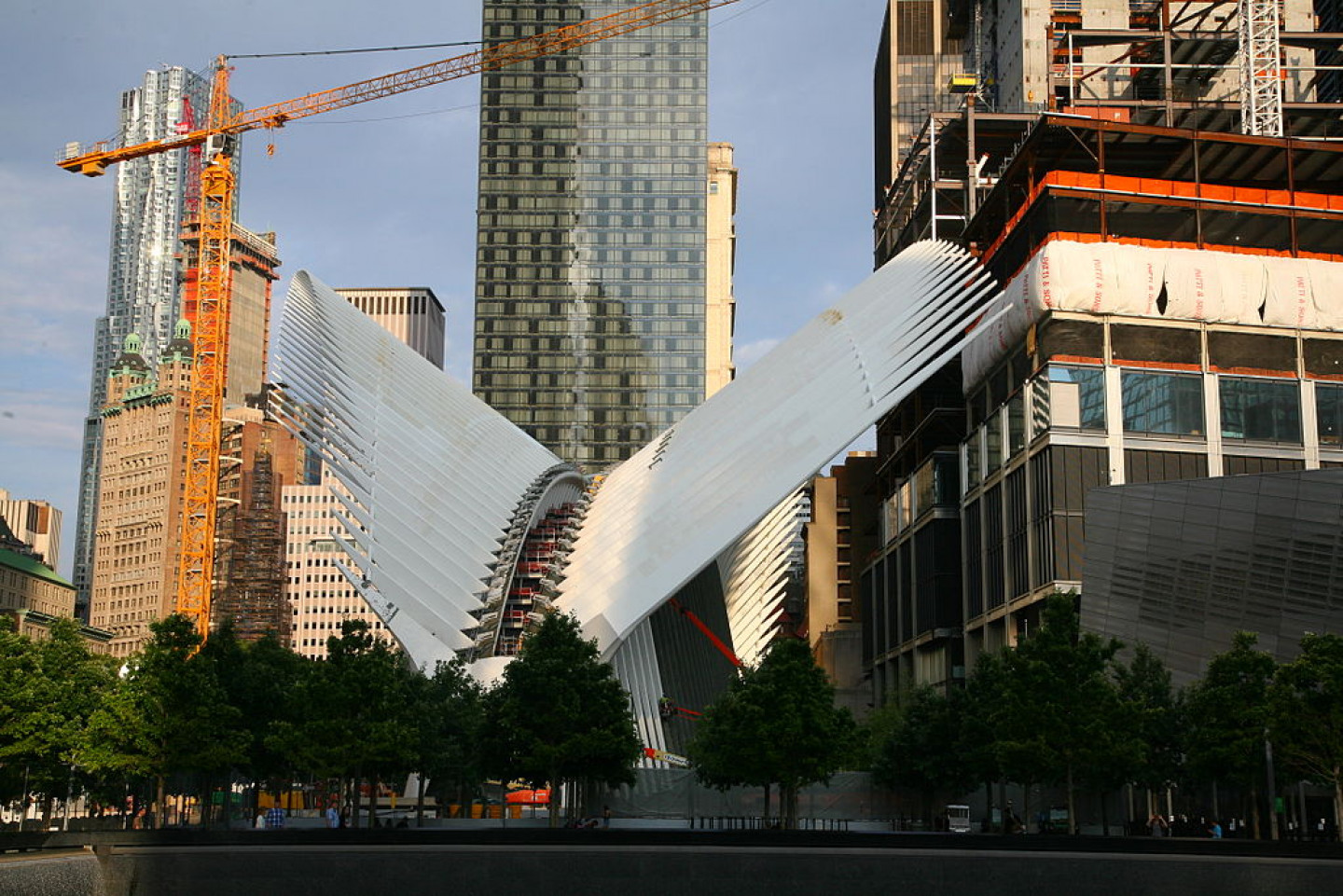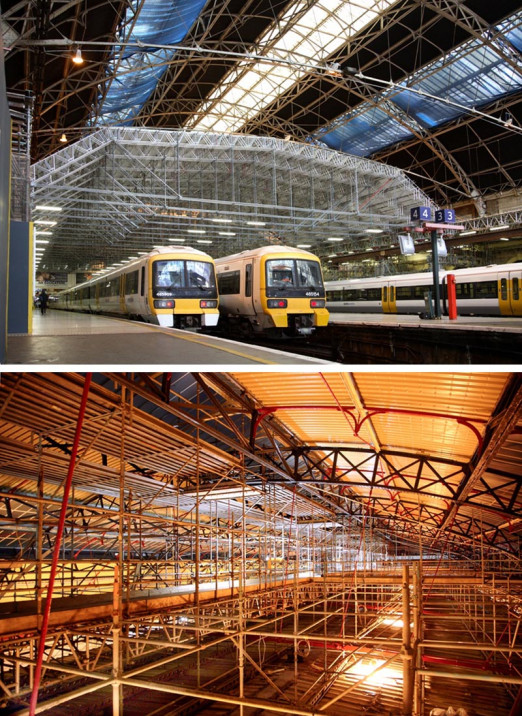As Santiago Calatrava’s $4 billion World Trade Center Transportation Hub opens in downtown New York, we gather together the reaction to this epic architectural and engineering project. For non-US readers not recognising the word 'Boondoggle' as an architectural term, it's been used more than once about Calatrava's building and is defined by Merriam-Webster's dictionary as, "an expensive and wasteful project usually paid for with public money."
Twelve years after plans were initally unveiled, the building inspired by a child releasing a dove, was partially opened. The Los Angeles Times, unlike many reviewers, got some vox pops from people who might actually use it. “It's nothing like I've ever seen before”, said Tim Soha, a New Jersey resident working at the nearby Bank of New York. “If they were going for ground-breaking, they can certainly check that off the list.” The LA Times also got expert opinion from Jesse Keenan, research director at Columbia University's Center for Urban Real Estate, who wondered whether an estimated 100,000 daily passengers (some estimate 250,000) means the money might have been better spent on busier transport facilities elsewhere in the city. Keenan’s sign-off was less than glowing. “It's in many ways kind of like an ambiguous tattoo,” he said. “You don’t quite know what it means, but you better start to like it because you're going to have it forever.”
Time Magazine does some legwork getting the lowdown from the public. The comment from New Yorker Juan Carlos Serrano Urdaneta living on the Upper West Side of Manhattan, nails both the money and architecture angles. “I had many expectations about this subway station, because you know $4 billion – you’re expecting something from Mars. But it’s really very arresting…It’s better inside than outside, because outside it looks a little congested. I’m not sure whether it’s a bird or dinosaur. But inside, you see the magnificent space.”
The Verge’s headline standfirst captures with a cynical humour how the building project has polarized opinion – “Inside the Oculus, New York's insane-looking, $4 billion train station: Winged dove? Or beached whale carcass?”
Michael Kimmelman, writing for The New York Times, is vexed over the cost. The initial projection was that it would take five years and $2.2 billion. As a benchmark Kimmelman calculated that the magnificent Grand Central Terminal costing $80 million in 1913 was half Calatrava’s budget (adjusted for inflation). But more than that, Kimmelman’s initial awe at the scale of the structure gives way to dissatisfaction at the lack of sympathy for its environment, its disinterest for how the building may be used by travellers, and for its lack of architectural surprise. “In its scale, monotony of materials and color, preening formalism and disregard for the gritty urban fabric, the hub is the sort of object-building that might seem at home on the Washington Mall. Its cramped mezzanine, where daily life should thrum, precludes the sort of bars and restaurants that have made the terraces at Grand Central a destination and heartbeat of the neighborhood.”
City Lab interviews the Spanish architect himself, Calatrava recalling a portfolio of transport station commissions from Zurich to Lyon and Lisbon among others. The latest he argues is more than a transport hub, it's an entry point for visitors to the 9/11 Memorial and Museum. “It’s really much more than a station,” says Calatrava. “It’s a piece of city that we’ve tried since day one to make so that when you walk in you don’t feel like you’re walking underground, but in the city. You’re in a New York network of movement with daily life, and you see the city from the roof.” It’s partly inspired by Eero Saarinen’s TWA terminal at JFK airport.

(Eero Saarinen’s TWA terminal at JFK airport. Creative Commons Image, photographer Evan P. Cordes)
But perhaps most interestingly, Calatravo pitches the building as a kind of architecture generator, a catalyst for future development over time, where the building’s form will also be shaped by the context it creates, “100 years from now we’ll have precipitated the development of Lower Manhattan. It’s necessary to have a lot of faith in these things because people move according to a city’s transportation system. When they opened Grand Central none of the skyscrapers there now had been built yet – Chrysler, Seagrams, Empire State Building. If you look for the center of gravity around these towers, it’s Grand Central. It precipitated the development of this area. I believe my station is going to be like that for Lower Manhattan.”
Last word to New York Magazine’s Justin Davidson who optimistically concludes a comprehensive feature by arguing, "whether you consider this station splendid overkill, an ugly boondoggle, or a lasting work of genius depends on a host of intangibles… Calatrava’s skeletal dove joins the tiny circle of New York’s great indoor public spaces, serving not just the city that built it but also the city it will help build.”
(Feature image used under Creative Commons Licence by Doc Searls)

